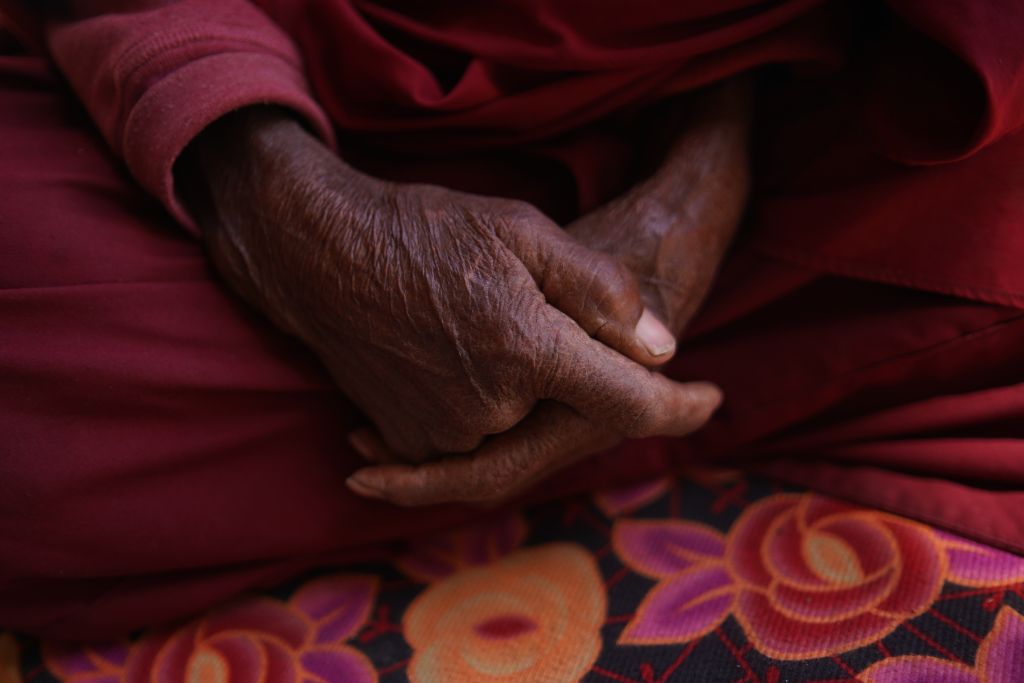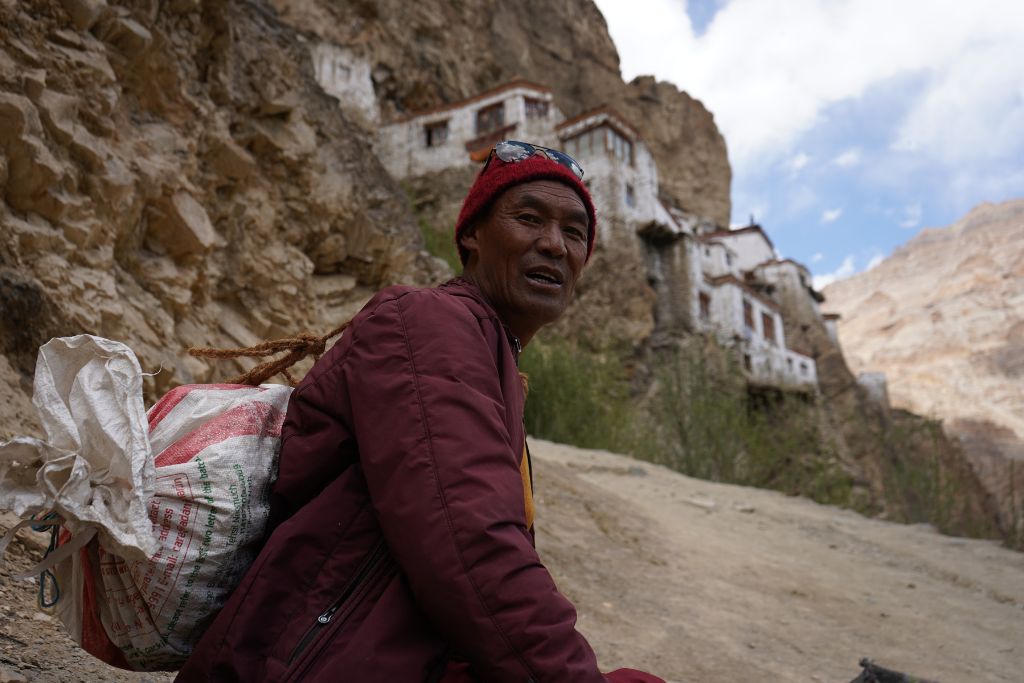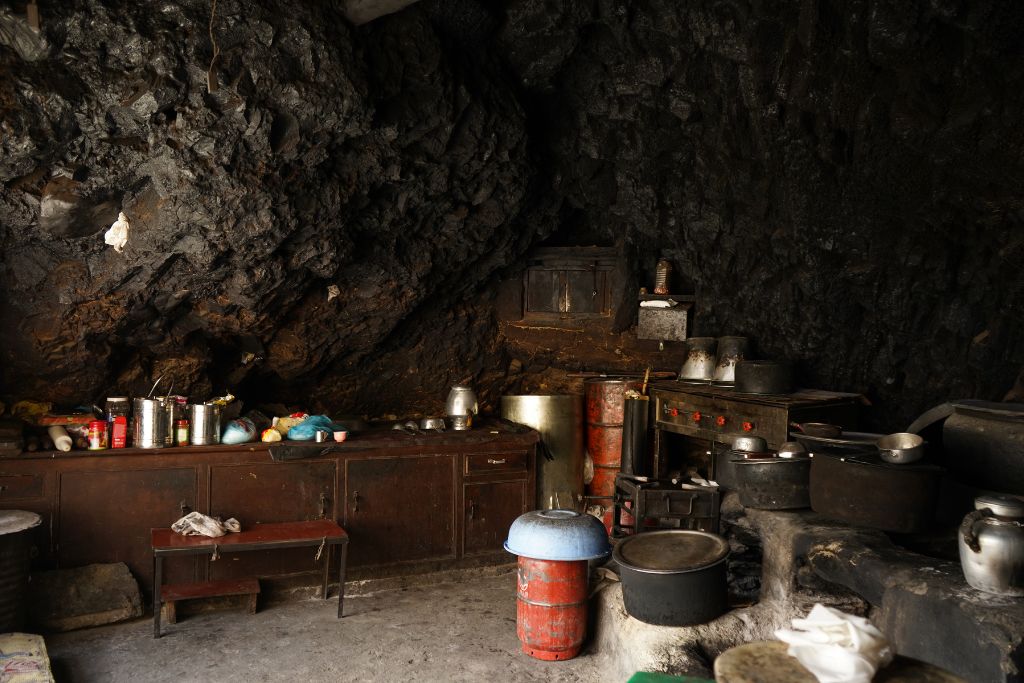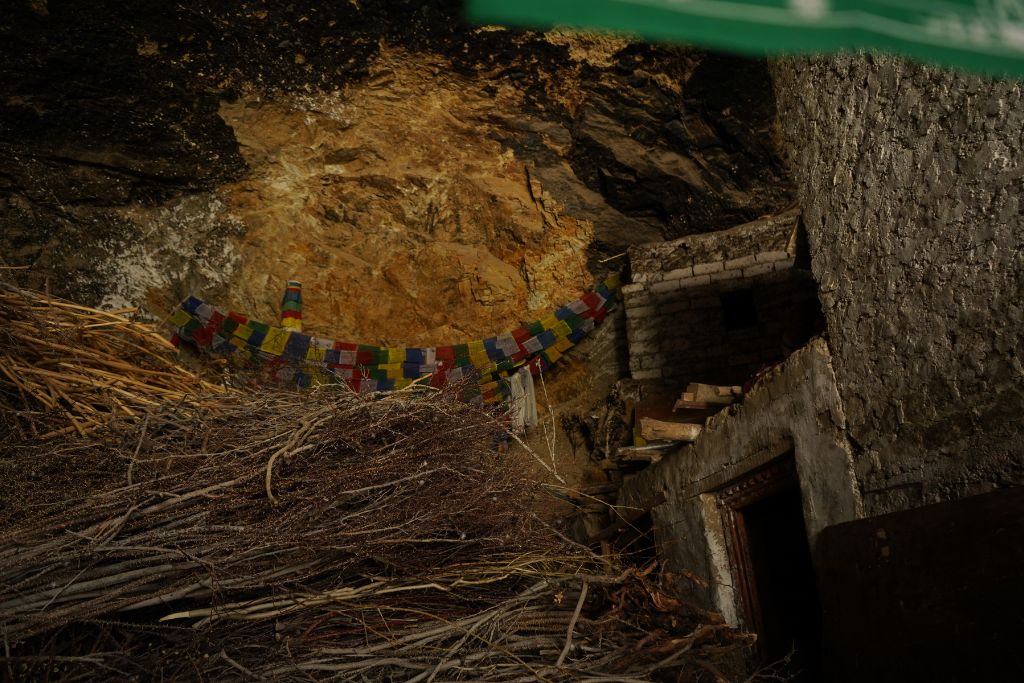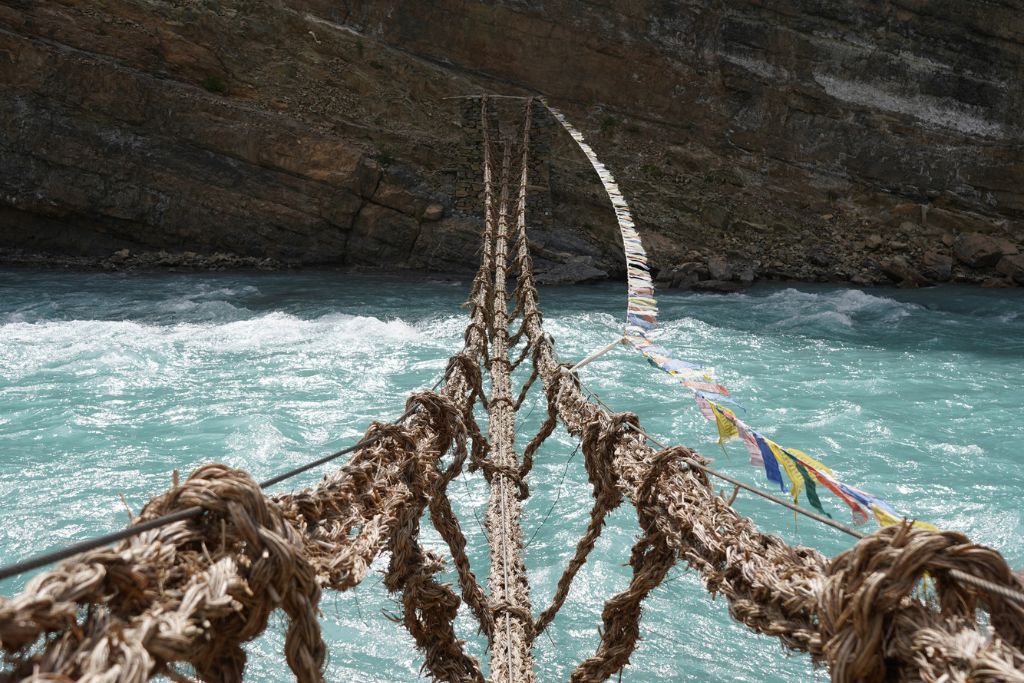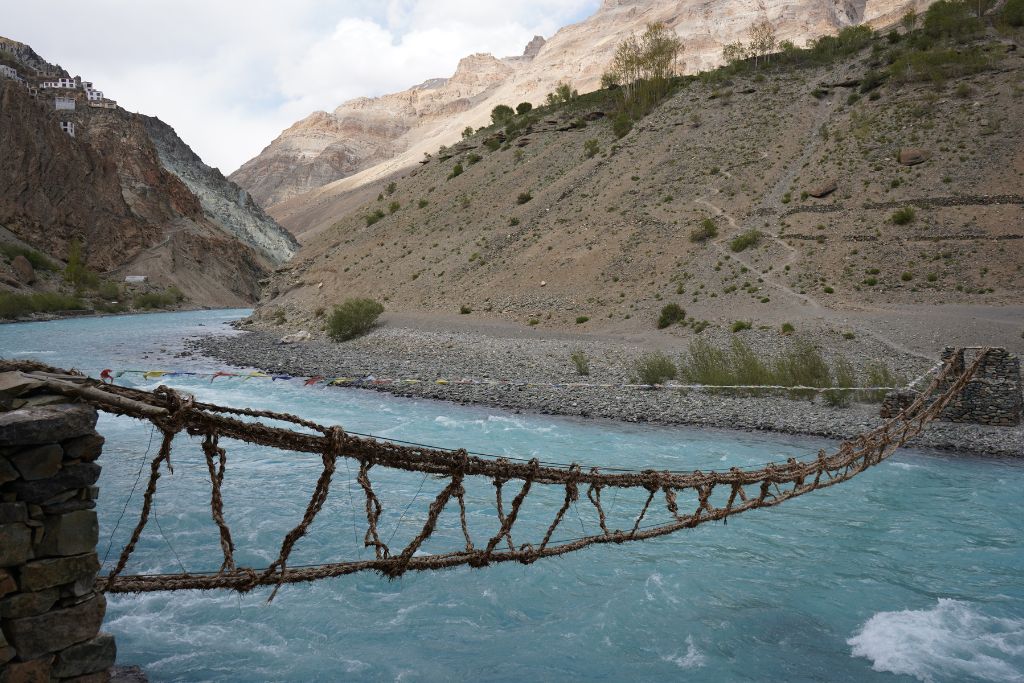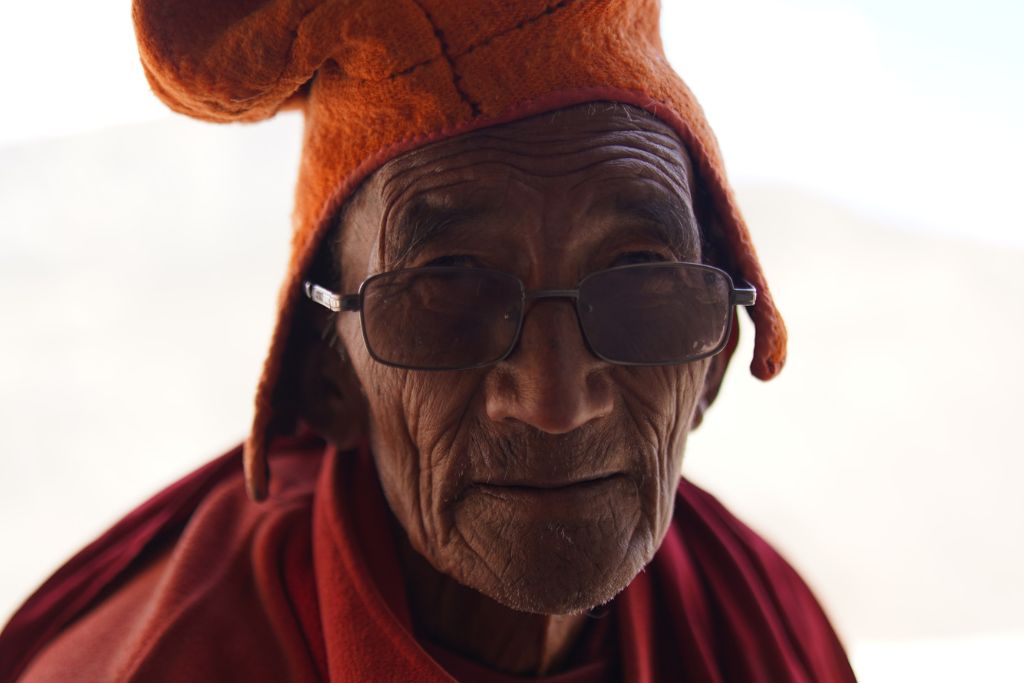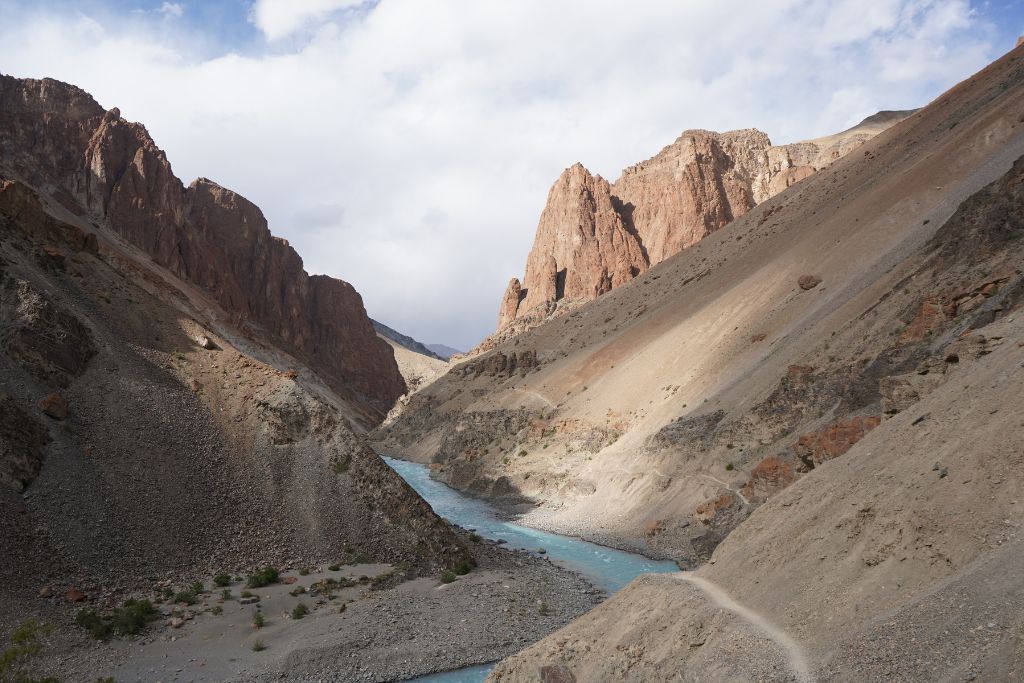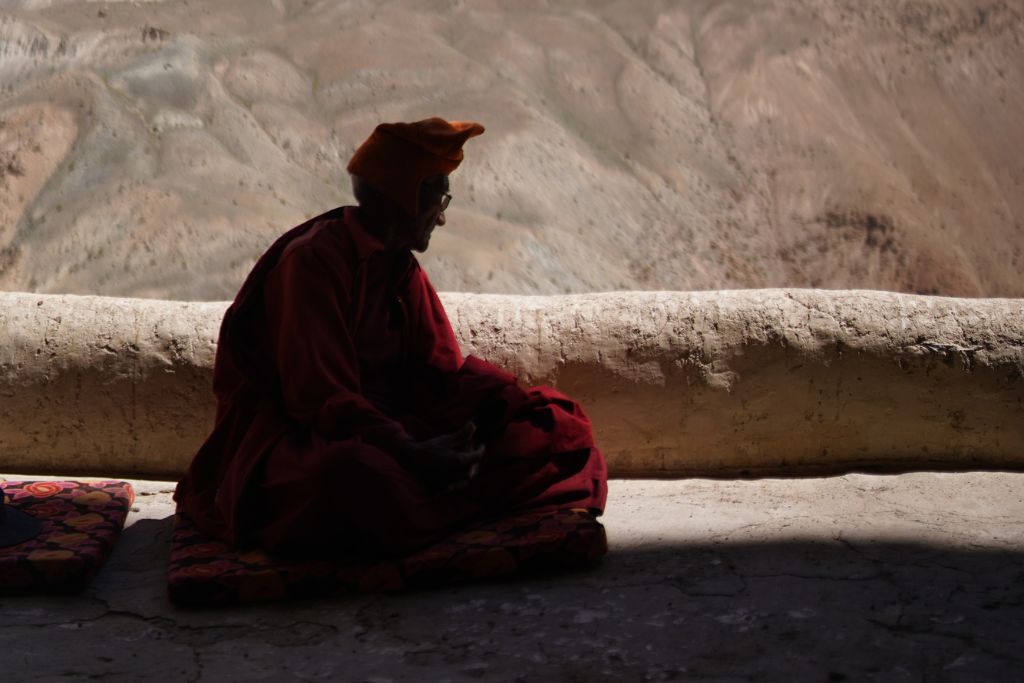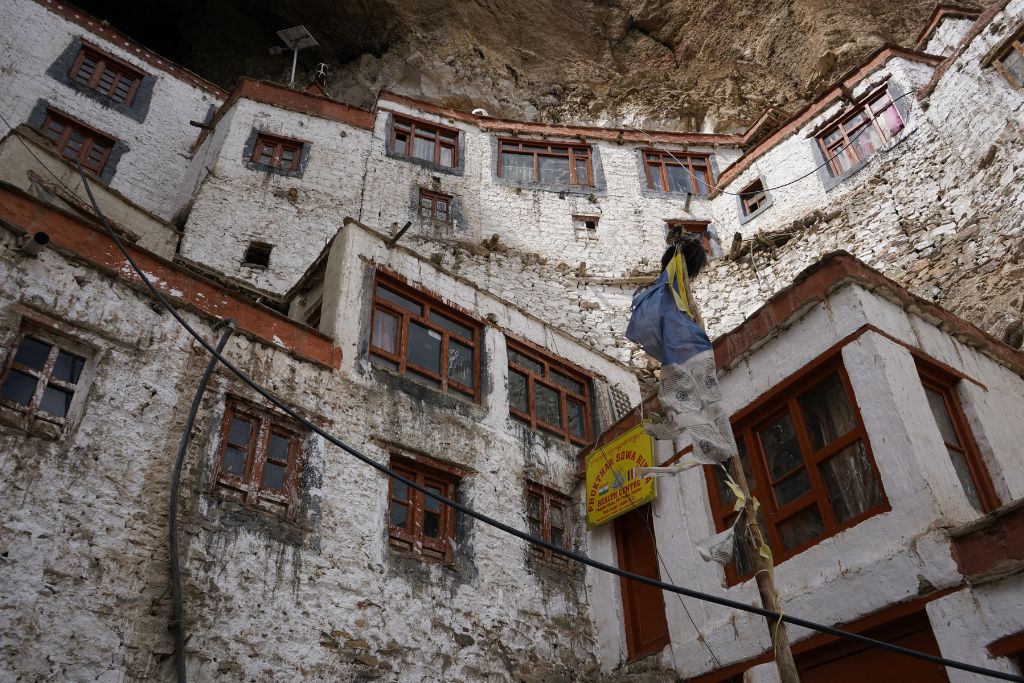Monks live and meditate in the 800-year-old Phuktal Gompa built around a 2,500-year-old cave in the Zanskar region of Ladakh. The monastery derives its name from phuk which means cave and tal which means liberation. So the monastery is also known as the Cave of Liberation. (Photo by Atiqur Rahman)
The monastery houses a mix of monks – some of them as young as six years. The older monks look after them. The young monks are also provided school education along with religious lessons. (Photo by Atiqur Rahman)
Most monasteries in Ladakh and the Spiti region of Himachal Pradesh are built in a similar manner – they are built on cliffs at remote locations which for the longest time weren’t easily accessible, making them ideal spots for monks to meditate. (Photo by Atiqur Rahman)
Also Read: World’s highest hamlet – What it’s like to live at 4,500 metres
The kitchen in Phuktal Gompa is basic, indicating the simple lives of the inhabitants. The entire gompa is connected through a pipe that goes through the kitchen. A bell connected through it is rung to indicate meal times. (Photo by Atiqur Rahman)
Also Read: Ladakh’s age-old chuspon water-use system gives hope
The 2,500-year-old main cave of Phuktal Gompa still has the old rooms. It is now mostly used for storing firewood. (Photo by Atiqur Rahman)
Claimed to be the only surviving traditional bridge in Zanskar Valley, this bridge is made of twigs from the birch tree. The twigs are braided together and the ends are fixed, making the intertwined twigs function as a bridge across the river. (Photo by Atiqur Rahman)
Also Read: Here’s all that happened at Ladakh Nomadic Festival
The traditional hanging bridge gives an adrenaline rush to the visitors crossing it to reach the monastery. (Photo by Atiqur Rahman)
The elderly monks in Phuktal Gompa – also known as Phukthar Gompa – mostly spend their days in meditation and prayer. (Photo by Atiqur Rahman)
The monastery is located near River Tsarap. It meets Kurgiak river in Purne, their confluence giving birth to River Zanskar. (Photo by Atiqur Rahman)
The monastery has been attracting Buddhist scholars and researchers for centuries. (Photo by Atiqur Rahman)
Also Read: Barpeta Satra: Assam’s spiritual hubs beset with falling celibate monk numbers
The hike to Phuktal Gompa starts from Purne village. It is a little over 3 km and takes about an hour to reach the monastery. Since it is remote the tourists are not as many as in the other places. (Photo by Atiqur Rahman)
Also Read: First musical band of high-altitude Ladakh riding high
The monastery consists of the main temple, multiple prayer rooms, a library, teaching facilities, a kitchen, living quarters and the main cave. (Photo by Atiqur Rahman)
Also Read: Assamese monks on mission to save rare culture and language
One can perform a parikrama (circumambulation) around the monastery. It takes about an hour to go around Phuktal Gompa. (Photo by Atiqur Rahman)
Also Read: Turtuk villagers piece together their broken pasts
The lead image shows Phuktal Gompa in the Zanskar region of Ladakh. (Photo by Atiqur Rahman)
Reporting and photography by Atiqur Rahman.
Atiqur Rahman is a Delhi-based photographer who hails from Nagaland, and is passionate about bringing stories from the Himalayan region.

